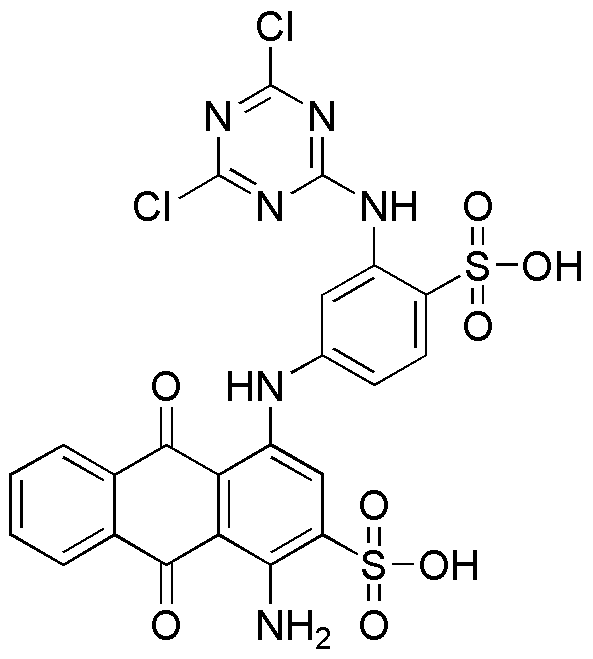Reactive Blue 4 is widely utilized in research focused on:
- Dyeing and Textile Industry: This compound is primarily used as a dye for cotton, wool, and silk, providing vibrant blue shades that are highly sought after in fashion and home textiles.
- Biological Staining: In laboratories, it serves as a biological stain for microscopy, allowing researchers to visualize cellular structures and processes effectively.
- Water Treatment: Reactive Blue 4 is employed in wastewater treatment processes to remove color and contaminants, helping industries meet environmental regulations.
- Food Industry: It is used as a food coloring agent in certain products, enhancing visual appeal while adhering to safety standards.
- Research Applications: The compound is utilized in various chemical research projects, particularly in studies involving dye-sensitized solar cells, where its properties can improve energy conversion efficiency.
General Information
Properties
Safety and Regulations
Applications
Reactive Blue 4 is widely utilized in research focused on:
- Dyeing and Textile Industry: This compound is primarily used as a dye for cotton, wool, and silk, providing vibrant blue shades that are highly sought after in fashion and home textiles.
- Biological Staining: In laboratories, it serves as a biological stain for microscopy, allowing researchers to visualize cellular structures and processes effectively.
- Water Treatment: Reactive Blue 4 is employed in wastewater treatment processes to remove color and contaminants, helping industries meet environmental regulations.
- Food Industry: It is used as a food coloring agent in certain products, enhancing visual appeal while adhering to safety standards.
- Research Applications: The compound is utilized in various chemical research projects, particularly in studies involving dye-sensitized solar cells, where its properties can improve energy conversion efficiency.
Documents
Safety Data Sheets (SDS)
The SDS provides comprehensive safety information on handling, storage, and disposal of the product.
Product Specification (PS)
The PS provides a comprehensive breakdown of the product’s properties, including chemical composition, physical state, purity, and storage requirements. It also details acceptable quality ranges and the product's intended applications.
Certificates of Analysis (COA)
Search for Certificates of Analysis (COA) by entering the products Lot Number. Lot and Batch Numbers can be found on a product’s label following the words ‘Lot’ or ‘Batch’.
*Catalog Number
*Lot Number
Certificates Of Origin (COO)
This COO confirms the country where the product was manufactured, and also details the materials and components used in it and whether it is derived from natural, synthetic, or other specific sources. This certificate may be required for customs, trade, and regulatory compliance.
*Catalog Number
*Lot Number
Safety Data Sheets (SDS)
The SDS provides comprehensive safety information on handling, storage, and disposal of the product.
DownloadProduct Specification (PS)
The PS provides a comprehensive breakdown of the product’s properties, including chemical composition, physical state, purity, and storage requirements. It also details acceptable quality ranges and the product's intended applications.
DownloadCertificates of Analysis (COA)
Search for Certificates of Analysis (COA) by entering the products Lot Number. Lot and Batch Numbers can be found on a product’s label following the words ‘Lot’ or ‘Batch’.
*Catalog Number
*Lot Number
Certificates Of Origin (COO)
This COO confirms the country where the product was manufactured, and also details the materials and components used in it and whether it is derived from natural, synthetic, or other specific sources. This certificate may be required for customs, trade, and regulatory compliance.


